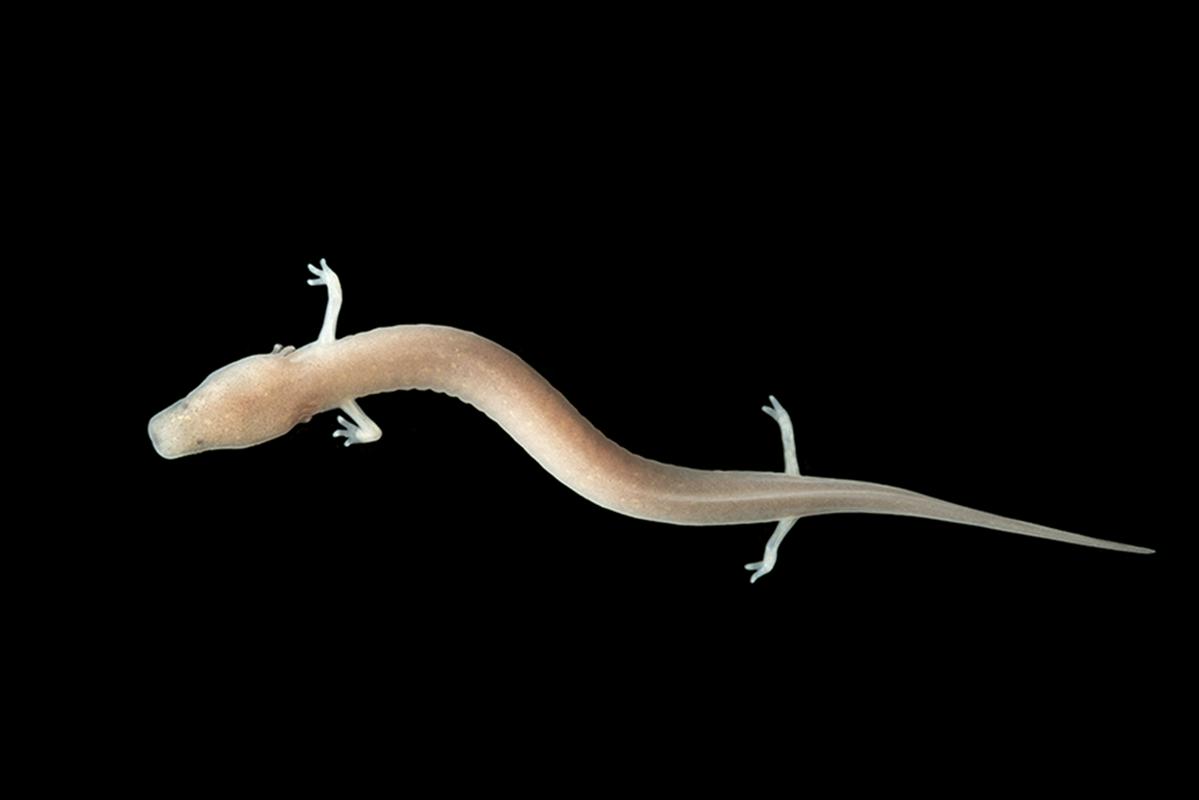In the eight weeks that followed, and for the first time in the cave’s history, biologists were able to observe the hatching of another 22 baby olms.
The offspring from Postojna’s underground shot to fame under the nickname "Baby Dragons from the Postojna Cave", according to legends and folk tradition recorded by Janez Vajkard Valvasor. The whole world, both the amateur and expert public, kept a close eye (and still is) on the development of the eggs in a special cave laboratory, which has been praised by a number of experts for its work in the successful development and number of survived baby dragons – they count 22.
The young ones, a miniature version of an adult olm
The path of the baby dragons has been followed through the egg, embryo and larvae stages – when they still had no developed extremities, a lot of yolk and were incapable of feeding themselves. Today they are young olms, measuring around seven centimeters and already hunt like real dragons.
A year ago they looked like "dotted tadpoles" but today they totally resemble an adult olm: the body and head have extended, they have three toes on their forelimbs and two on their hind feet. They have now entered their youth stage, which will last several years. The only physical difference between them and their parents are their tiny eyes, their pigment, which is slowly disappearing, and their size. They are a miniature version of an adult olm and will preserve their resemblance to a larvae until the end of their lives.
Life in the cave is slow and calm, but exciting nevertheless, just as the life of the baby dragons. The first year was "stressful", full of happenings, changes and rapid development (at least that’s what it looked like through our eyes). Things have now calmed down a bit and their development seems to be doing well. They are still closely watched over and every event is meticulously recorded, as it might bring new interesting insights to the life of an olm.
In the next couple of years the baby dragons will "lose" their eyes which will be covered by skin. Their greyish pigment will also disappear and they will then become completely "transparent". They will become sexually mature in the next 14 years, and live to be at least 100 years old.
A. K.; translated by K. J.


































































